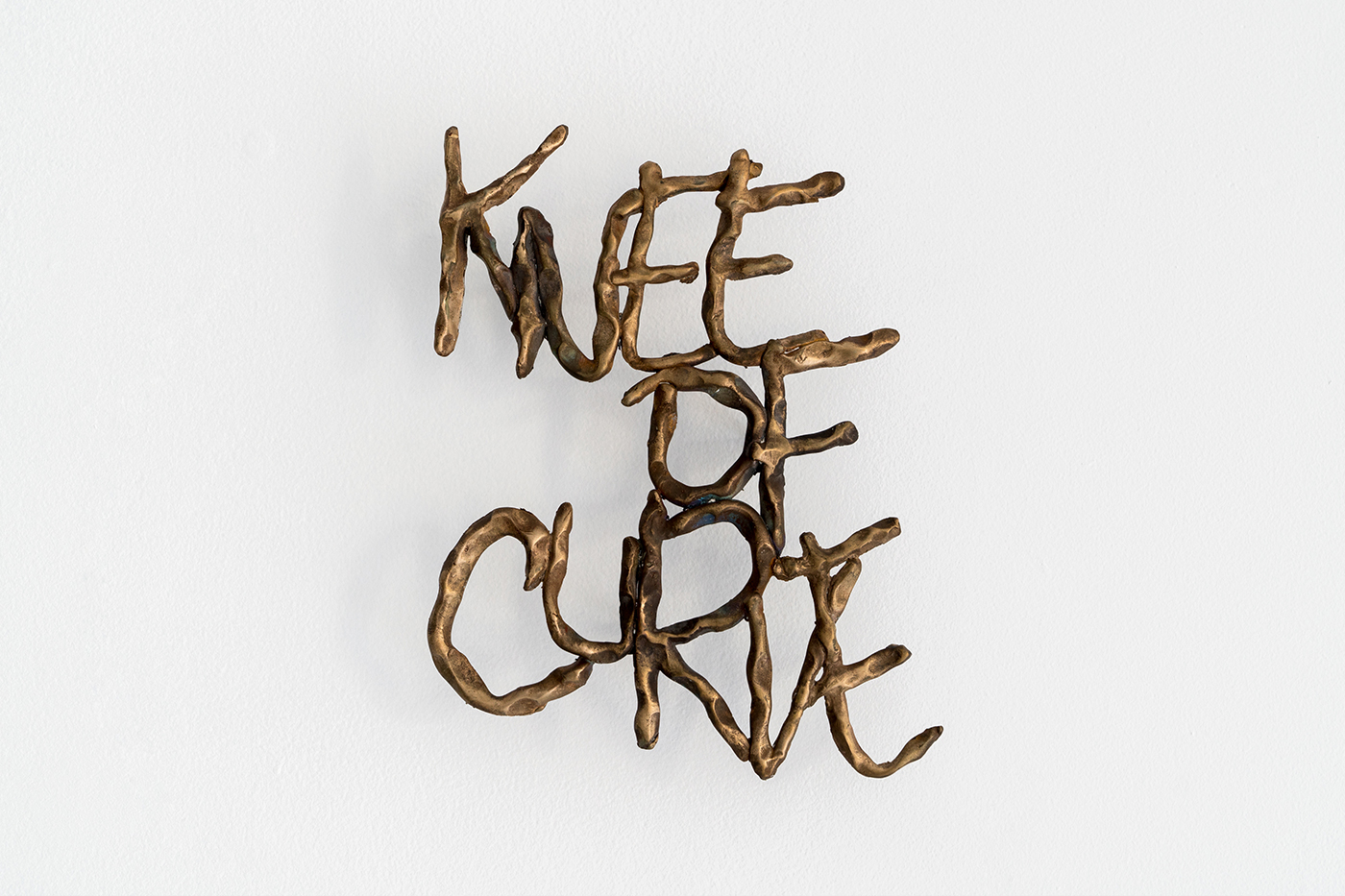The Mathematical Properties of a Donut
- Shanie Tomassini

A hominid has just traced his hand on the wall of a cave. He has ochre on the back of his palm. He goes to the stream and cleans the hand that served as a stencil with the one that served as a tool. For a moment, the water becomes muddy in contact with the pigments. While the painter is satisfied, humanity is impatient.
Obviously, it was not a single human or a single representation of a hand that shook up our ontology; but somewhere the first hand of the first human voluntarily left a mark, not on the snow or the mud no the water, but on stone, which deteriorates more slowly than a hundred generations of bipeds.
There is a point of singularity here, a radical break in the silent chronology of our evolution.
♦
Shanie Tomassini likes to disrupt the integrity of matter; each time testing the substance of a form to ensure its necessity, it’s coherence and its reality. Her practice seeks to delicately undermine and shake up our perceptions, by subtly attacking our sensorial perceptions of the forms of objects.
The Mathematical Properties of a Donut continues to reflect upon the confusion of the senses through collapsing the form. By borrowing certain concepts from the mathematical field of topology, Tomassini approaches the anatomy of her sculptures as a series of infinite possibilities within the limited space of a given surface. The stone that becomes a donut integrates the idea of a deeply malleable state inside the constraints of the same area. Tomassini approaches the meaning and morphology of an object in the manner of Moebius strip; this ribbon, which at first appears to be composed of two distinct planes, is revealed by a specious inversion, to be the same surface that turns into a loop upon itself.
Through this game of mutation that disrupts the physical integrity of a form, the artist reflects on the evolution of an object in space and time, but also on the scope of the gesture that shaped it. The interventions on the walls of the exhibition are like so many winks to cave art – those first deliberate and perennial traces of our species – as well as to the display mechanisms of the gallery. In both cases, the context becomes the medium where one leaves a distinct and decisive trace that modifies the environment and makes a temporal mark. The work Exponential Clay jokingly refers to the gestures that lift up the long evolutionary curve of human manifestations. This hand-carved diagram depicts an exponential growth curve, initially composed of a slow, steady rise that culminates in transformational verticality. KNEE of CURVE confronts the elliptical and unpredictable moment that we can only anticipate and is situated in the “hollow of the curve.” The evocation of a radical moment – the suggestion of a threshold of singularity – is at the heart of this exhibition. It is the quest for a tipping point that radically modifies the appreciation of an object, a moment of liminal gestation that augurs in a new ontology.
– Jean-Miguel Zurita
Artist Biography
Shanie Tomassini is a visual artist from Montreal, currently living and working in Austin, USA where in 2017, she started a master’s degree at the University of Texas. She has participated in a few artist residencies such as VSVSVS (Toronto) and Centre Bang (Chicoutimi) and in independent projects in Cuernavaca, and Cholula, Mexico. The Mathematical Properties of a Donut presented at CIRCA is her fourth solo exhibition. In her sculptural practice, Tomassini questions the physical integrity of the things that surround her, but at the same time, she also engages in a dialogue with the established precepts of the art institution. She is the founder and curator of the project Expo de Casier, which showed the works of a number of emerging artists on a regular base from 2013 to 2015.















